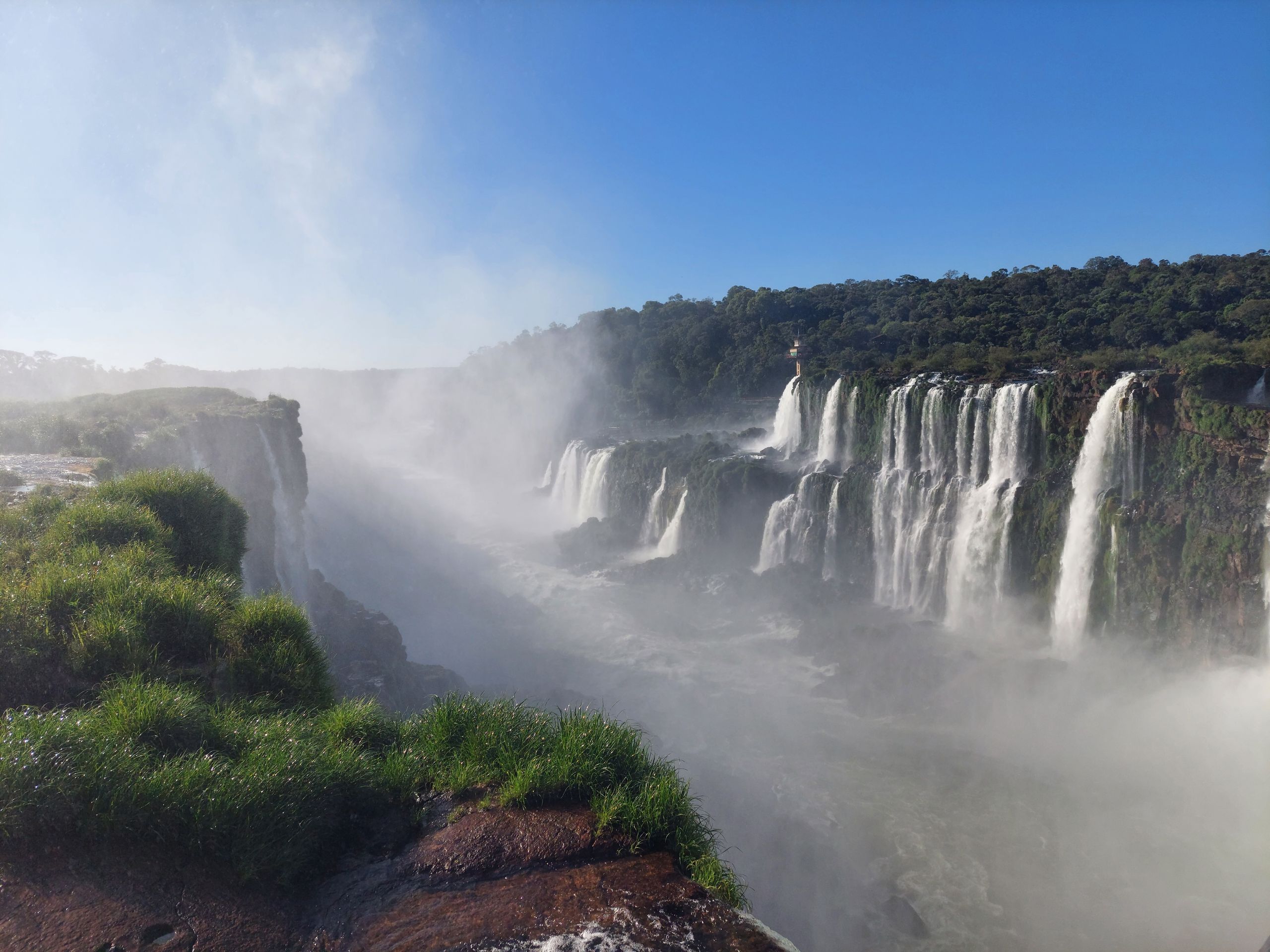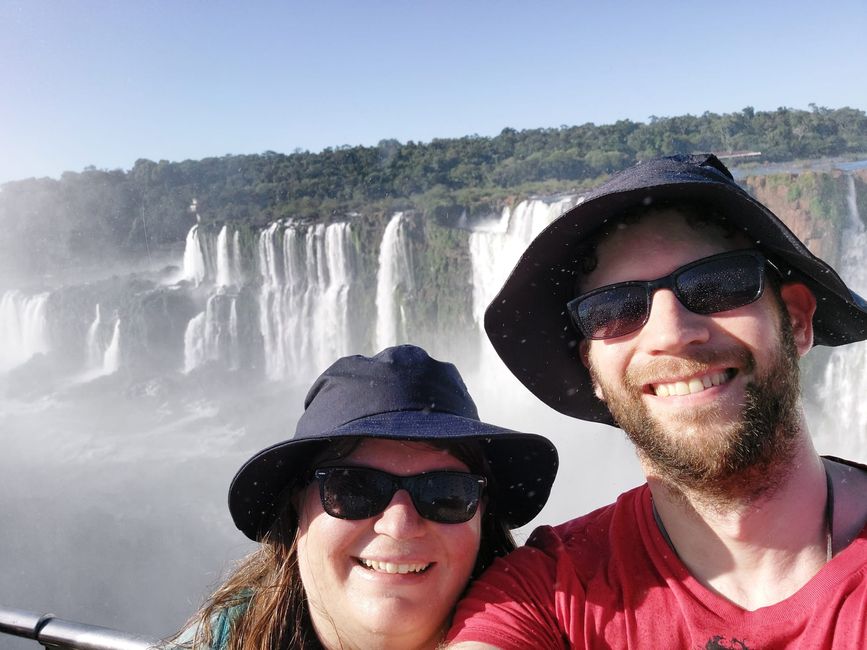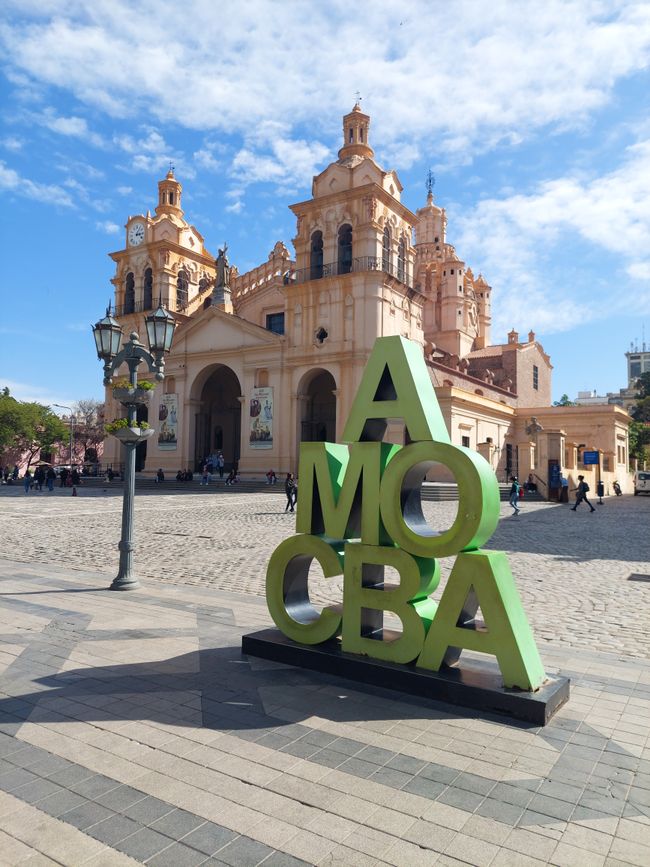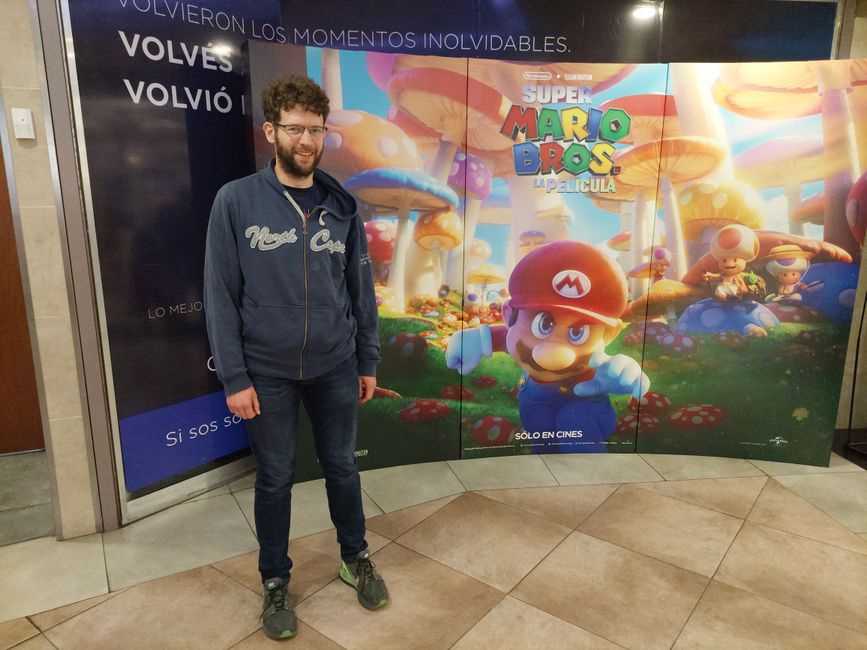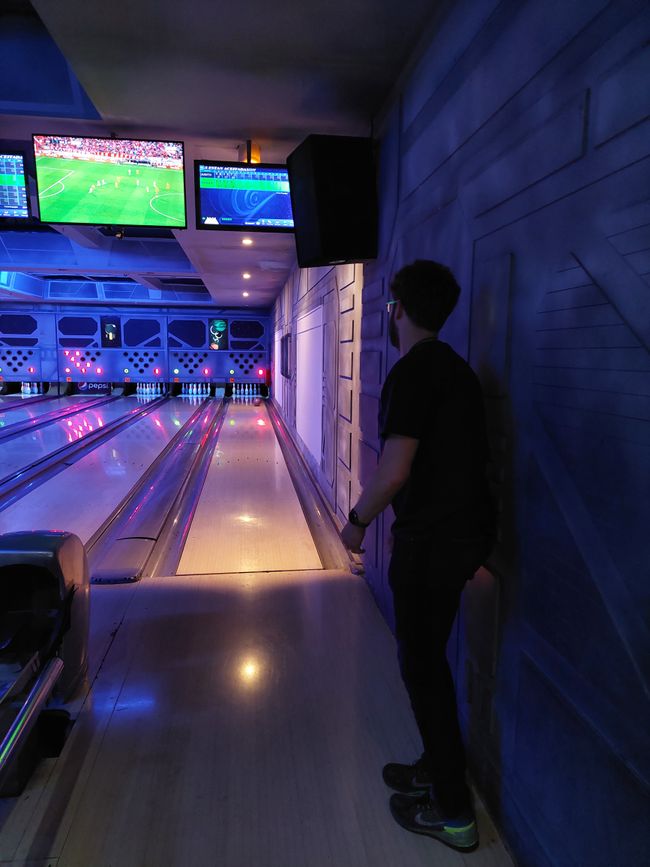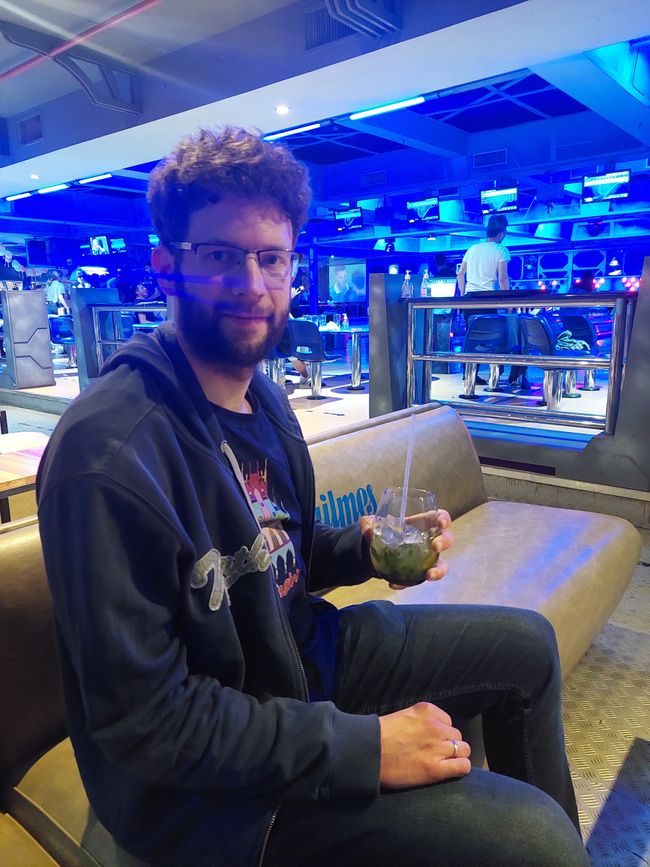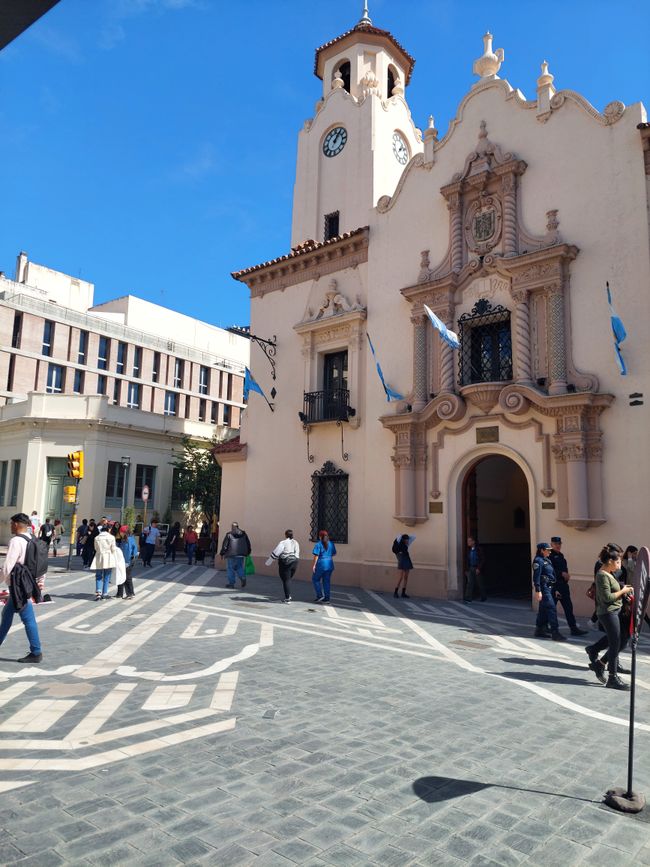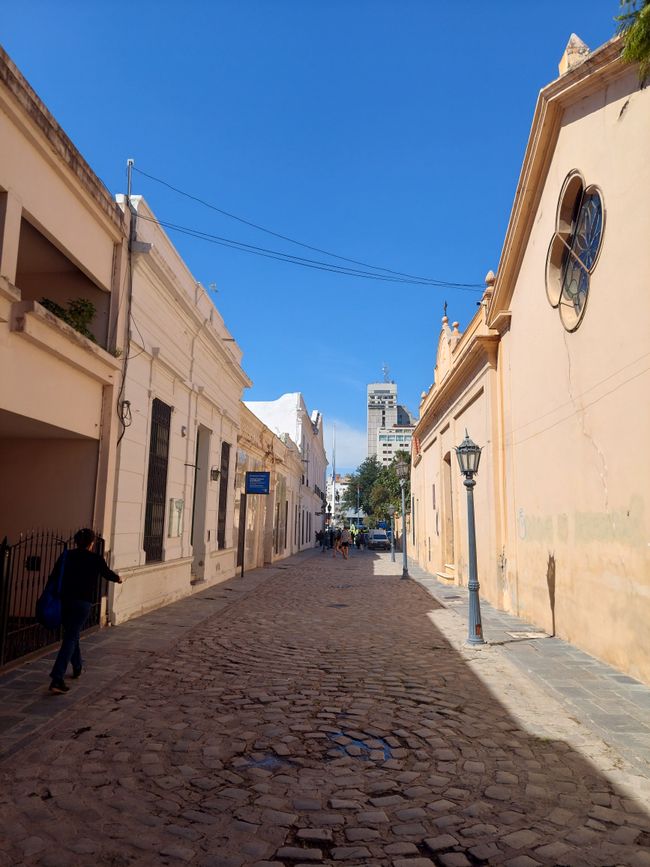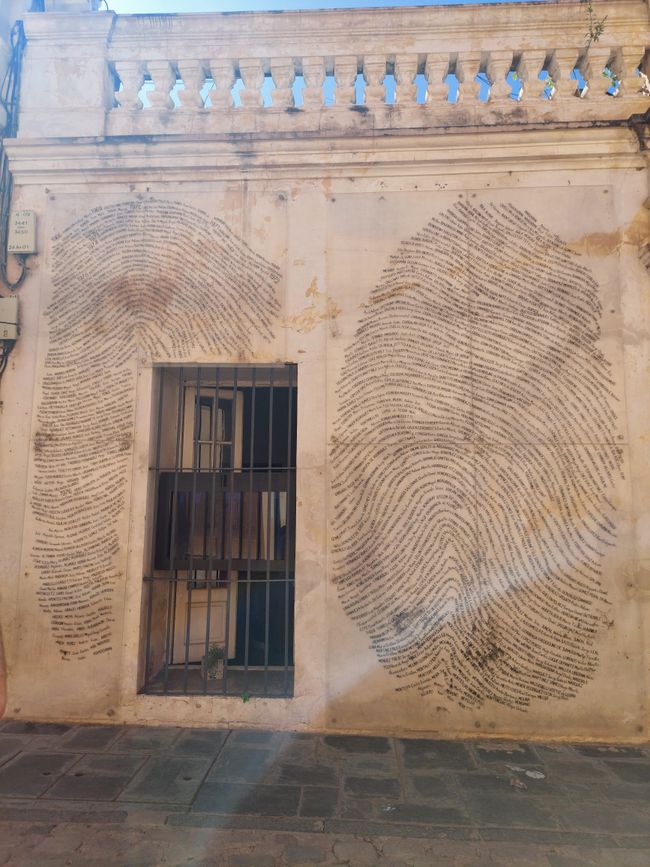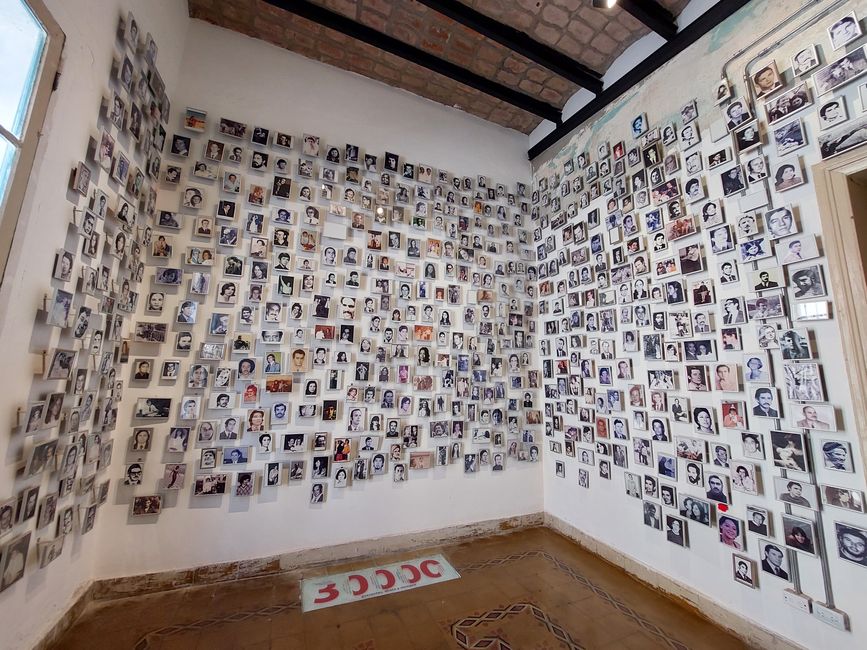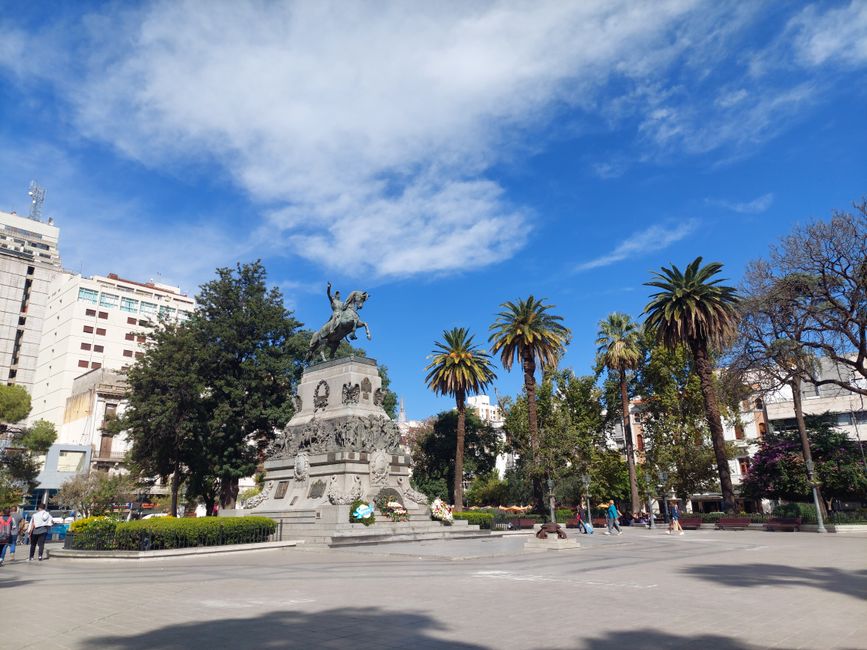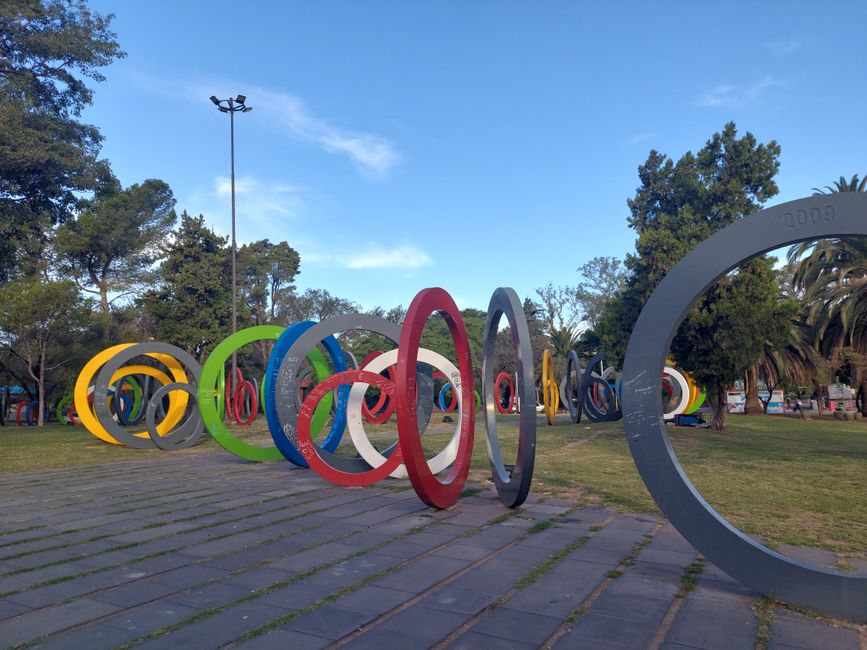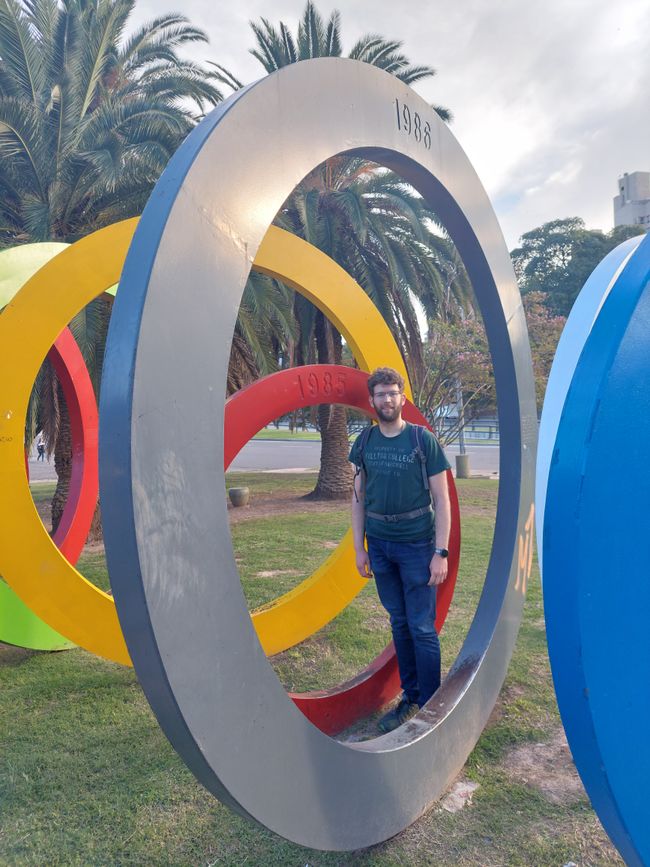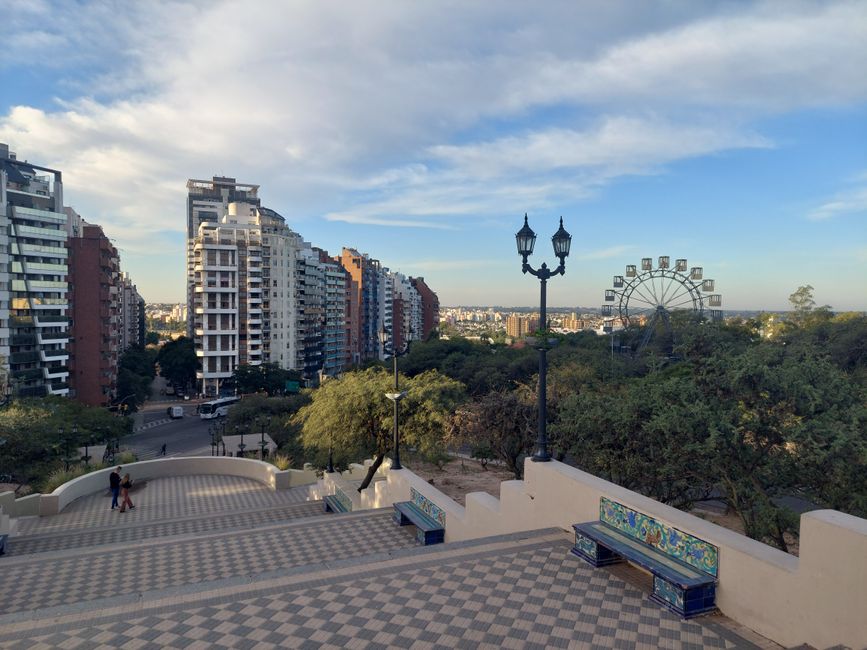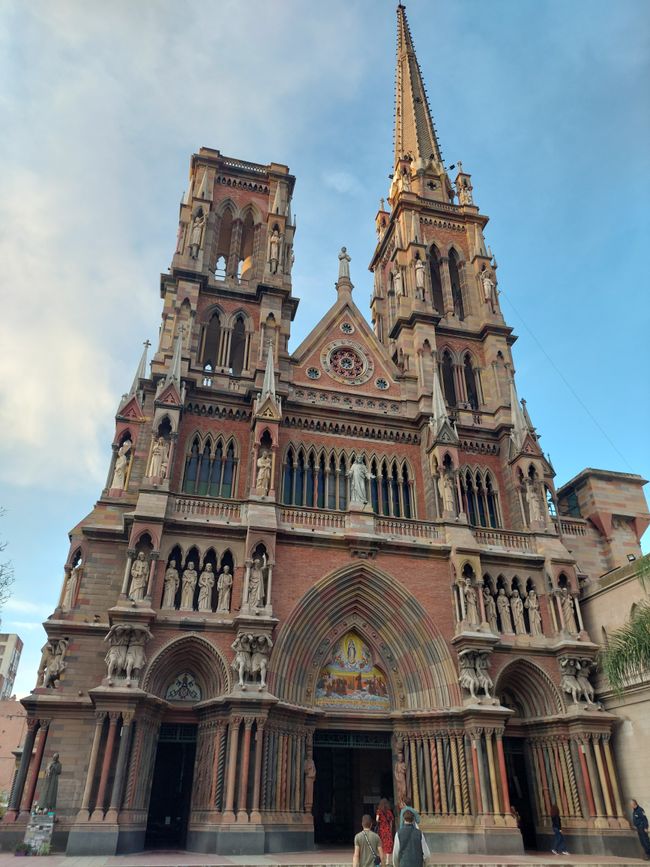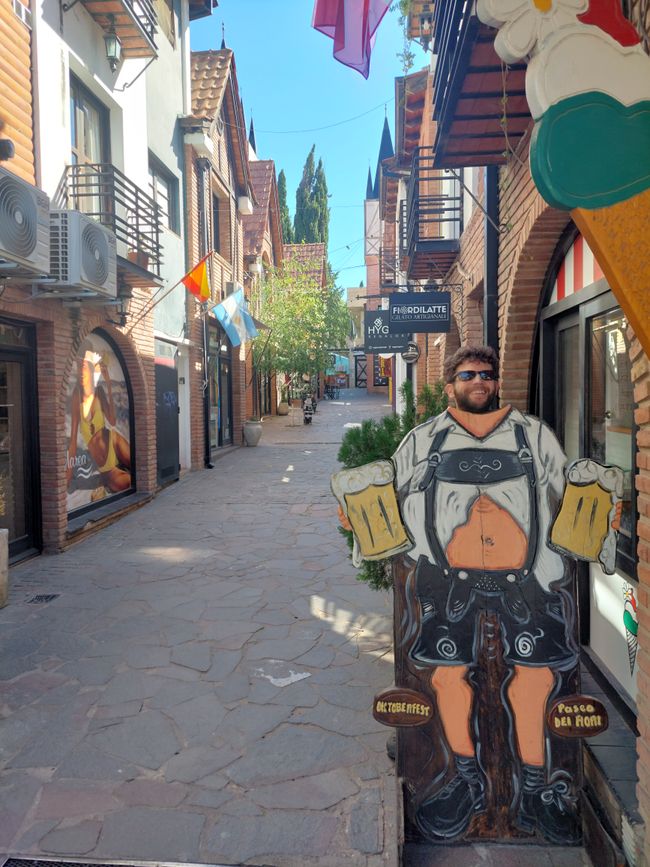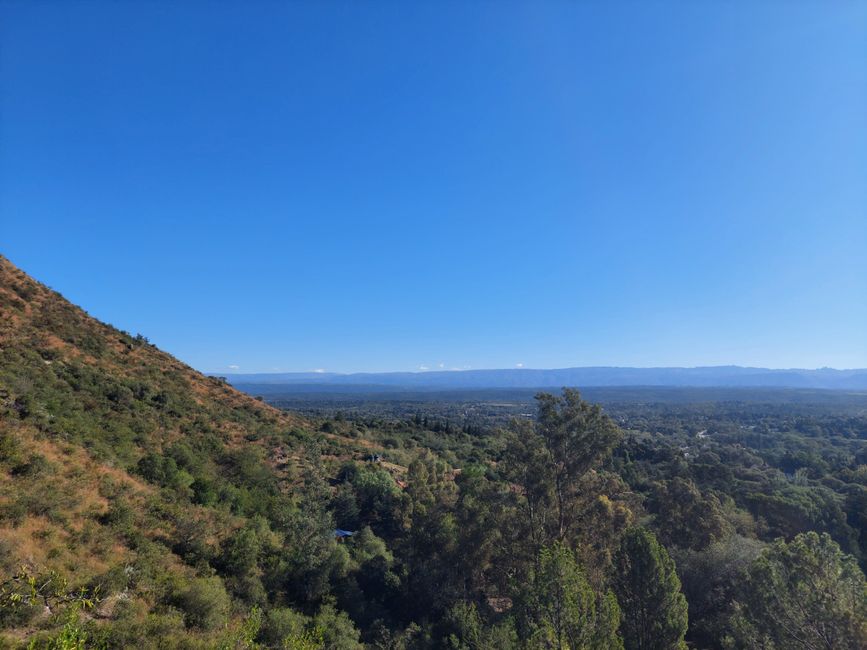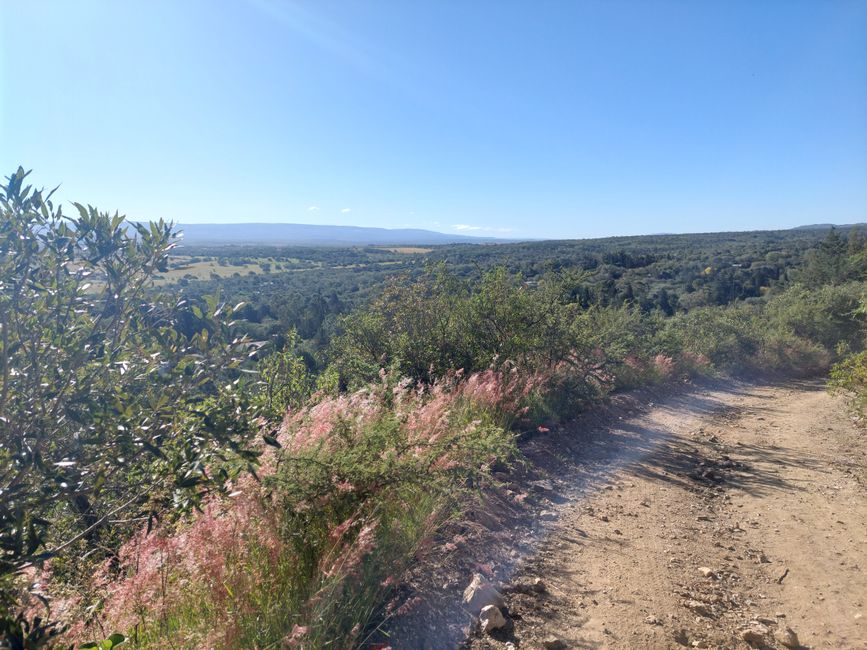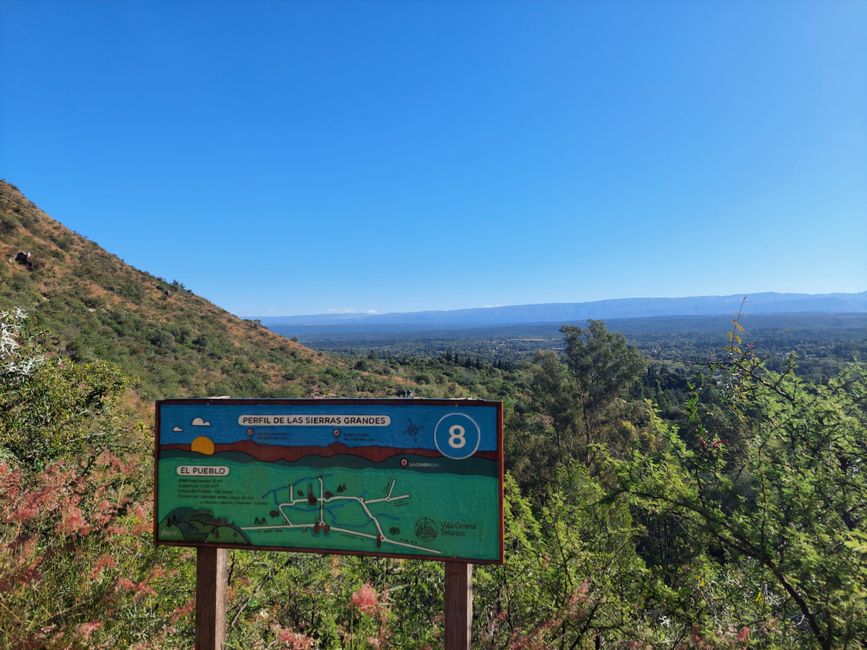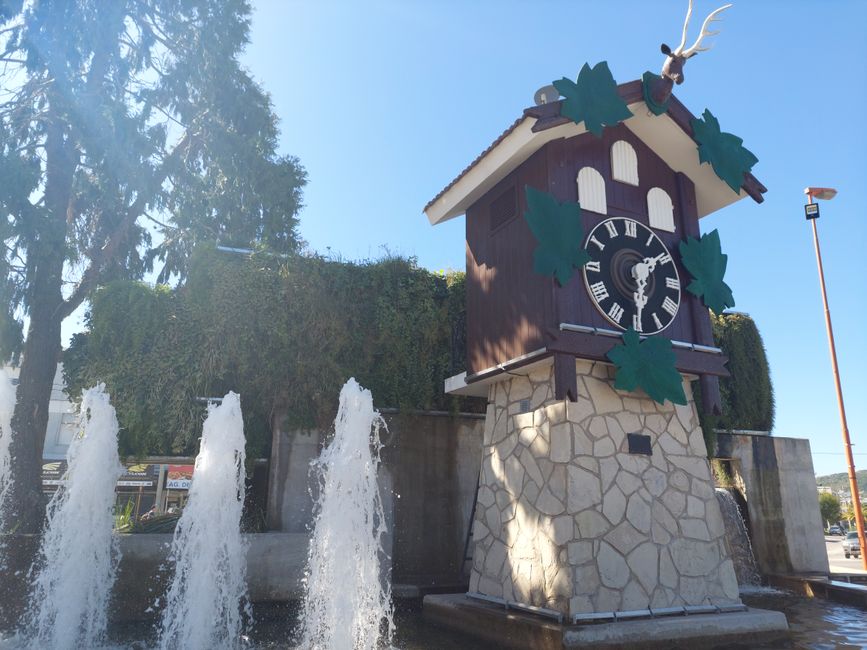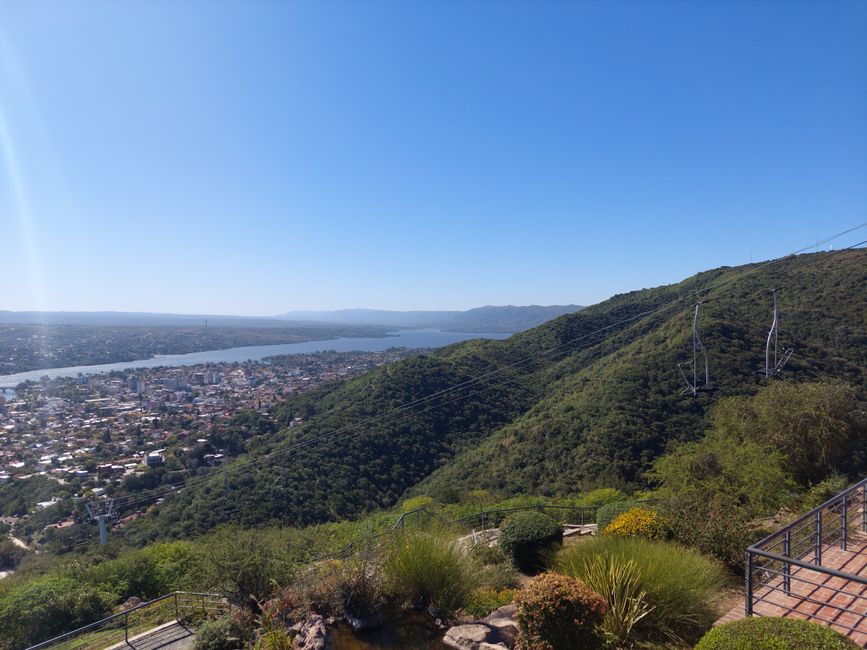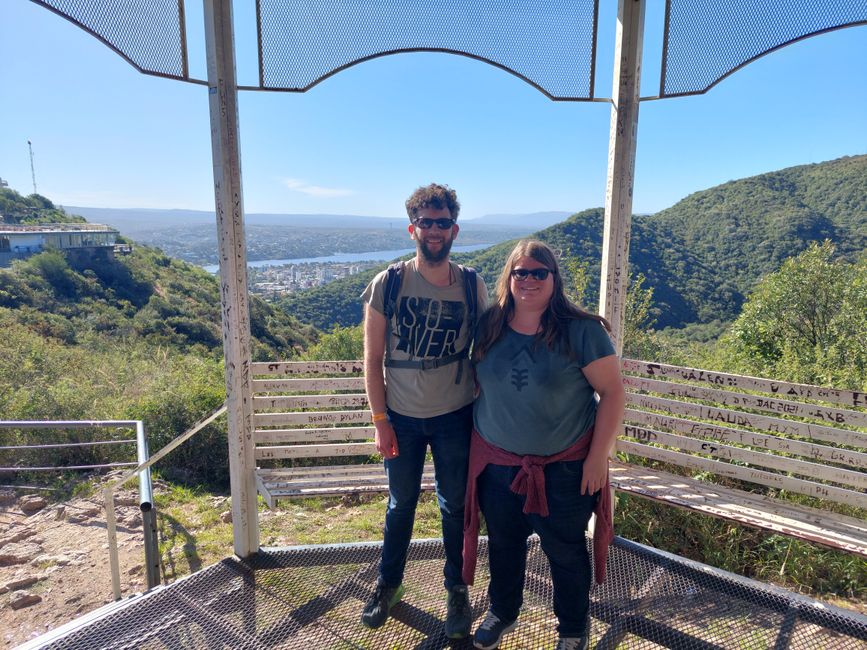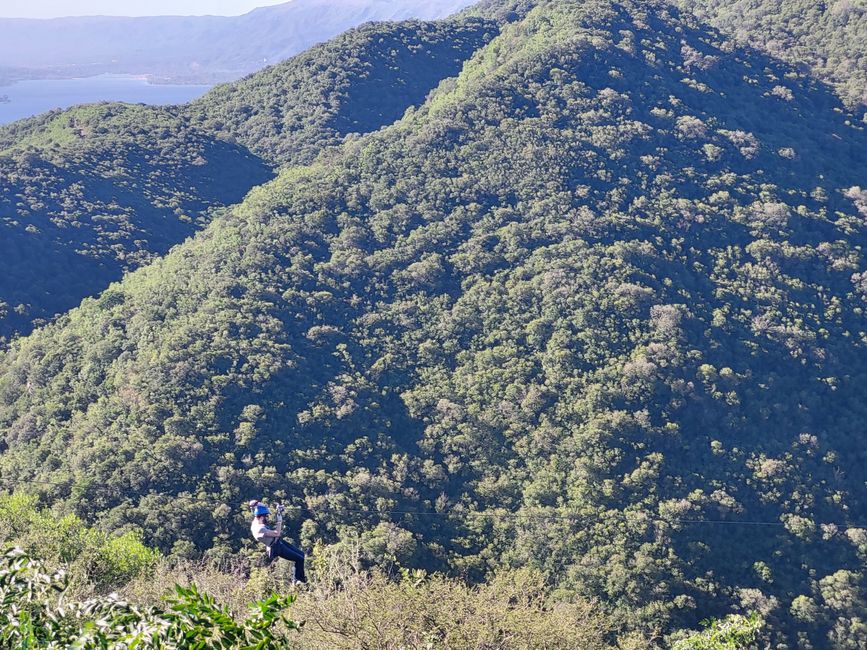Cordova
Birt: 23.04.2023
Gerast áskrifandi að fréttabréfi
The bus ride to Córdoba was supposed to be as exciting as buying the tickets beforehand. At the beginning, we ate the packed lunches from our previous accommodation, although the vegetarian one consisted of greasy beef, cold fries, and dry baguette (maybe Sebastian misunderstood something). During our stop in Posadas, we realized that we were supposed to change buses one station earlier. Posadas was only listed as the final stop on our tickets, but no one had told us... Luckily, at the ticket counter in Posadas, they told us that our second bus would also pass through here and we could board here. Since the second bus was an overnight journey and we had limited legroom on the first night bus ride, we had chosen seats on the upper deck at the back this time. Unfortunately, we didn't realize that these were probably the worst seats when traveling on bumpy roads. We drove on very poor roads, and during one of our many awake moments, we moved forward and later realized that Córdoba was still quite far away. Apparently, the bus took back roads and stopped in every small town. Finally, we arrived with a delay of three and a half hours after a total travel time of 32 hours. The next long bus rides are not as long, but we decided to do them during the day.....
On the next two days, we didn't do anything too strenuous. Taking advantage of the favorable prices, we treated ourselves to a four-star hotel in Córdoba, where even the elevator cabins are regularly cleaned (double room with breakfast about 70€ per night). Since it was Sebastian's birthday on the first day, we mainly went to the cinema (we also understood the new Super Mario Bros. movie in Spanish), played two rounds of bowling, and had cocktails. The hotel surprised us with a birthday cake at breakfast. We had also planned to go for a massage at the hotel, but we had to postpone it to the next day because the spa area was closed.
On the second day, Judith bought a new lens cap and we got cash from Western Union again (this time Sebastian sent it himself, as it is only free of charge once per person). Getting the money was much faster than in Buenos Aires, and we got everything even though it was already afternoon. So, our first impression of this city was very positive in every way.
Córdoba is the second-largest city in Argentina, but the atmosphere seemed much more relaxed compared to Buenos Aires. Maybe that's also because the climate here is drier due to the long distance from the sea. We didn't actually explore the city until our third day there, with two free walking tours: old town in the morning and new town in the afternoon. The old town tour took us to the cathedral and other colonial buildings, which are now mostly museums. The outlines of some buildings are also depicted on the pavement in front, because a responsible artist thought that people only look at the ground. Given the many potholes on the sidewalks, we also find this behavior sensible. We were also taken to a shop where we received the Córdoba version of Alfajores, a typical Argentine sweet, as a gift and had the opportunity to buy more directly (so it was a somewhat 'commercialized' free walking tour). Then we visited a crypt under the street, which was already finished when the construction of the associated church was abandoned. In the city, we came across a kind of barber quartet called 'El Cuarteto del Amor', and Judith suddenly sang an entertaining and beautifully sung serenade just for fun. After the old town tour, we visited a free museum on our own, which commemorates the last of Argentina's six military dictatorships. However, we learned little about that period itself, but mainly about the people who disappeared at that time.
Before the new town tour in the afternoon, we had time for frozen yogurt (we just needed something ice-like again). The next tour guide, who was nice but somewhat artificial, took us to more modern buildings as well as a viewpoint (we always like that) and the very beautiful and colorful Capuchin Church. We also visited a monument with 200 rings representing 200 years of Argentine independence. When everyone in the group was asked to stand at the ring corresponding to their birth year, it was made very clear to us that free walking tours like this often attract people who look as fresh as we do but are actually much younger. So, because of our youthful character, we went to a bar for a beer with two Dutch people and a Brazilian couple from the group, which the tour guide recommended. We talked to the Dutch about our previous travels and the upcoming destinations. Then we went to another specialty beer restaurant that we wanted to try. There, a very attentive and communicative waitress brought us our best meal so far and two interesting specialty beers. But then it was enough for the day...
On the next two days, we took trips to two places in the surrounding Sierras Grandes: Villa General Belgrano and Villa Carlos Paz. Many organized tours are offered, but because we always prefer to do things on our own and have our own pace, we took the widely available public buses to both places.
For our first destination, we had to provide our DNI (National Identity Document) number to the bus company in order to be assigned seats on the bus. The DNI is an identification document that apparently everyone has here and that you always need. While a saleswoman in Tigre, where Sebastian wanted to pay with a card, seemed to be confused by the fact that the number on the presented passport contains letters, foreigners apparently always get the two seats reserved for people with disabilities assigned by this bus company. So, on the outward journey, we noticed that the brake indicator light was blinking and another warning light was on the whole time. However, the bus brought us to our destination unharmed and braked successfully several times. Villa General Belgrano is a village with many German-speaking immigrants. The town center has a strong beer and exaggerated Bavarian feel. They even have an Oktoberfest in the local spring. We took funny photos, refreshed ourselves with drinks (non-alcoholic), and then walked to the Cerro Mirador viewpoint. We underestimated the distances in the village, and it took a long time until we were on the actual hiking trail, so we were quite exhausted when we reached the top. Most people apparently just drive to the start of the hiking trail by car. Fortunately, we didn't choose the more difficult path to another, higher viewpoint. Afterwards, we stopped at the restaurant 'Viejo Munich' (Old Munich). Judith liked her mashed potatoes, and Sebastian's veal schnitzel tasted more like any Argentine beef, of which we already had enough, with delicious breading instead of the original Viennese schnitzel.
The city of Villa Carlos Paz, which we visited on the next day (and the last day in Córdoba), is not a 'German' place, but for some reason, its landmark is a large cuckoo clock, which we visited first after a stroll through the city. The city is a popular tourist destination among locals and our guidebook describes it as a mix between Las Vegas and Disneyland, which we find somewhat exaggerated. One attraction is a small amusement park on a mountain, which can be reached by a chairlift. We went up, enjoyed the view, and Sebastian took a ride on the zipline. By the way, this turned out to be slightly more challenging than our previous zipline rides because you had to control the speed with one hand - but at least you couldn't start rotating uncontrollably. Unfortunately, Argentine viewpoints seem to generally lack benches. Here, we only found benches at the statue of the baby Jesus and the Madonna, which people are supposed to worship. On the way back to Córdoba, our bus wouldn't start anymore after we stopped at a bus stop just outside the city. Luckily, we didn't have to wait long until another bus from a different bus company picked us up again. Back in Córdoba, we finally wanted to eat in a vegetarian restaurant again, like we did in Buenos Aires. This time we got vegetarian tarts and tasty salads, although there was chicken hidden in them.
Finding vegetarian and/or healthy food in Argentina is difficult. The cuisine here initially sounded quite pleasant to us: the famous good beef, a lot of pizza and pasta thanks to the Italian immigrants, and specifically in Córdoba, Arabic cuisine, as many people from Arab countries have immigrated here. Well, we already had our experiences with the very hearty Argentine pizza in Buenos Aires. The beef often contains visible fat, which people here seem to like, as we've heard. And when we had Arabic food in Córdoba, we chose Meze, like at the Lebanese restaurant in Münster. It was just as delicious as at home, but we also noticed that at least at this restaurant, if you don't choose the vegetarian or vegan option, you mainly get meat and little vegetables.
On our last evening in Córdoba, we couldn't resist trying the typical drink of the province of Córdoba: Fernet with Cola. The tasting took place in none other than our hotel bar, accompanied by the sounds of the pianist. That would have been expensive, but we took advantage of the hotel's offer of a complimentary drink in exchange for giving up daily linen changes. Giving up the linen change didn't quite work (unfortunately, this is the case in many hotels), but we received a voucher, for which a waiter, initially somewhat confused, actually offered us two glasses of this 'Córdoba Signature Drink' among other options, which we gladly accepted. We quickly agreed: the drink tastes like chlorhexidine mouthwash. We drank it and were happy to have had the opportunity because you shouldn't drink the original chlorhexidine mouthwash.
Our stay in Córdoba was diverse and enjoyable from start to finish. Our next destination is Mendoza, where there is supposed to be good wine and good food. Let's see what that means...
Gerast áskrifandi að fréttabréfi
Svaraðu
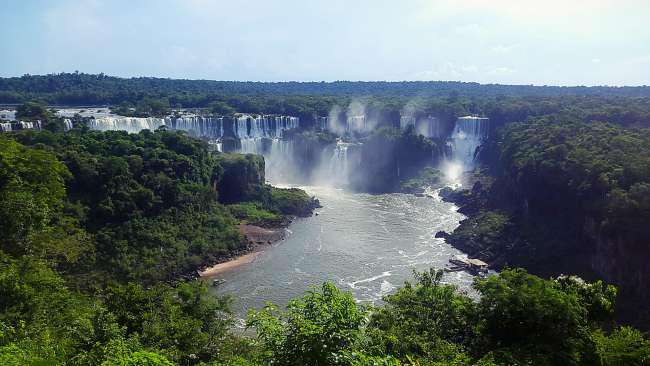
Ferðaskýrslur Argentína
